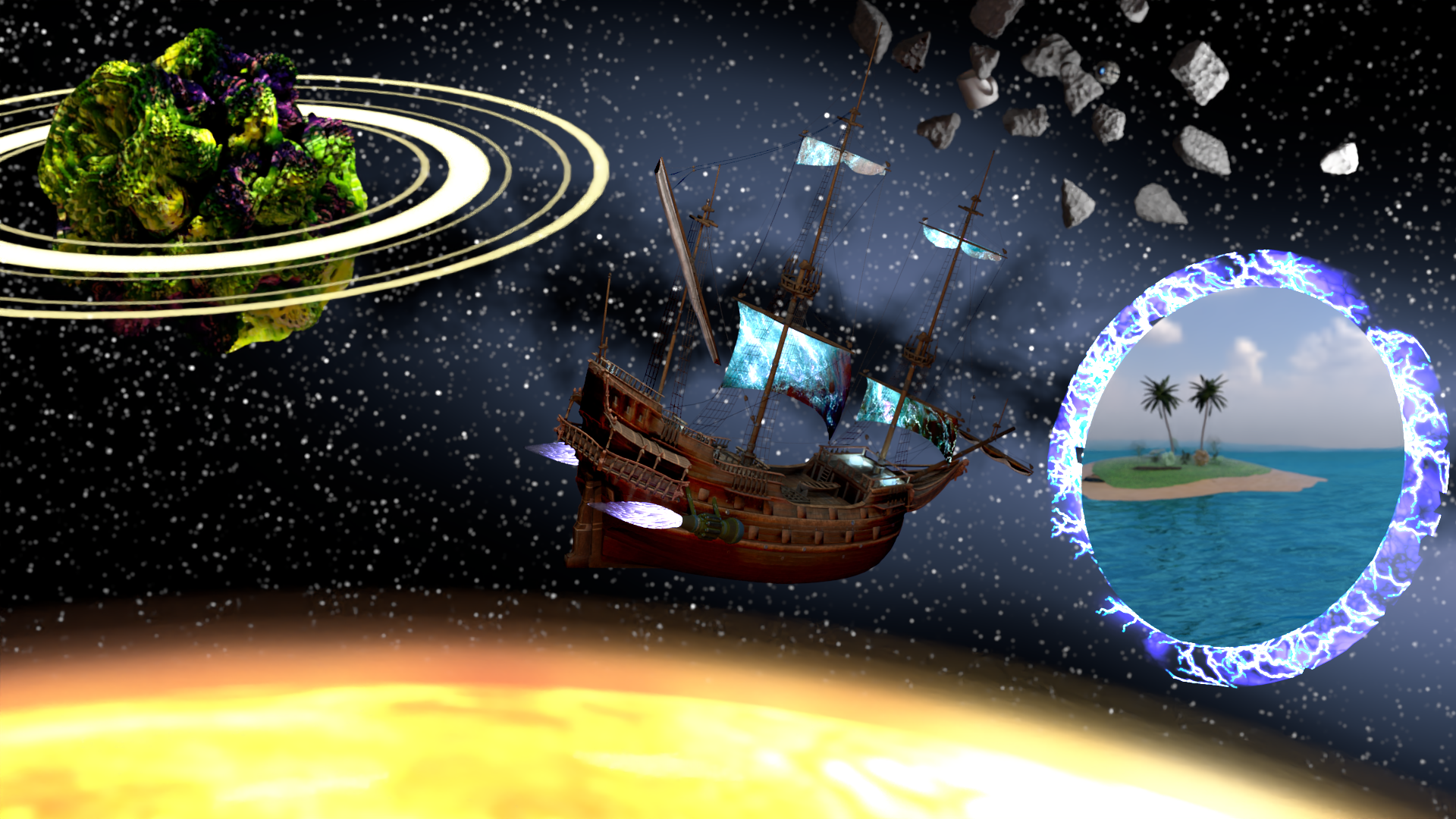Path-tracing rendering engine created for the Computer Graphics 1 lecture at Saarland University by Lukas Auer and me. This renderer is based upon the lighwave framework that was provided for the course.
Some base functionality was already provided by lightwave:
- Modularity
- Modern APIs flexible enough for sophisticated algorithms
- Shapes, materials, etc are implemented as plugins
- Basic math library
- Vector operations
- Matrix operations
- Transforms
- File I/O
- An XML parser for the lightwave scene format
- Reading and writing various image formats
- Reading and representing triangle meshes
- Streaming images to the tev image viewer
- Multi-threading
- Rendering is parallelized across all available cores
- Parallelized scene loading (image loading, BVH building, etc)
- BVH acceleration structure
- Data-structure and traversal is supplied by us
- Split-in-the-middle build is supplied as well
- Useful utilities
- Thread-safe logger functionality
- Assert statements that provide extra context
- An embedded profiler to identify bottlenecks of your code
- Random number generators
- A Blender exporter
- Export Scenes built in Blender to the XML format used by lightwave
More features required for a working renderer were implemented into Picture Perfector in the practical assignments and advanced ones for the rendering competition:
- Camera Models
- Basic Perspective Camera
- Thinlens Camera
- Basic Primitives
- Sphere
- Mesh/Triagle
- Instancing Support
- Different Integerators
- Normals integrator: Only renders normals of scene objects
- Direct lighting integrator: Only renders using direct light
- Path tracing imtegrator: Full path tracer using bounces
- Albedo integrator
- SDF bounce count integrator
- Path tracing integrator for volumetric rendering
- BSDFs:
- Diffuse
- Conductor
- Dielectric
- Rough Conductor
- Simple Principled
- Lambertian Emission
- Textures:
- Checkerboard Texture
- Image Texture
- Lights:
- Environment Map
- Area Lights
- Point Light
- Directional Light
- Next Event Estimation
- Image denoising using OpenImageDenoise
- Acceleration Structures:
- SAH Bounding Volume Hierarchy
- Volumentric Rendering (semi heterogeneous)
- Shading Normals
- Signed Distance Fields and Ray-Marching
- Basic Ray-Marching encapsulated in primitive object
- Shape configurable in XML with hierarchy of SDF primitives and operations
- SDF Primitives:
- Box
- Cylinder
- Mandelbulb fractal
- Sphere
- SDF Operations:
- Combine (Union, Intersection, Subtraction) of 2 SDF shapes
- Thicken
- Transform
The features folder contains example scenes including rendered results that show most of the features of the renderer.
In addition, there was a rendering competition at the end of the course for which a scene was created.
The results of this and credits for used assets can be found here.
Lightwave was written by Alexander Rath, with contributions from Ömercan Yazici and Philippe Weier. Many of our design decisions were heavily inspired by Nori, a great educational renderer developed by Wenzel Jakob. We would also like to thank the teams behind our dependencies: ctpl, miniz, stb, tinyexr, tinyformat, and pcg32.
